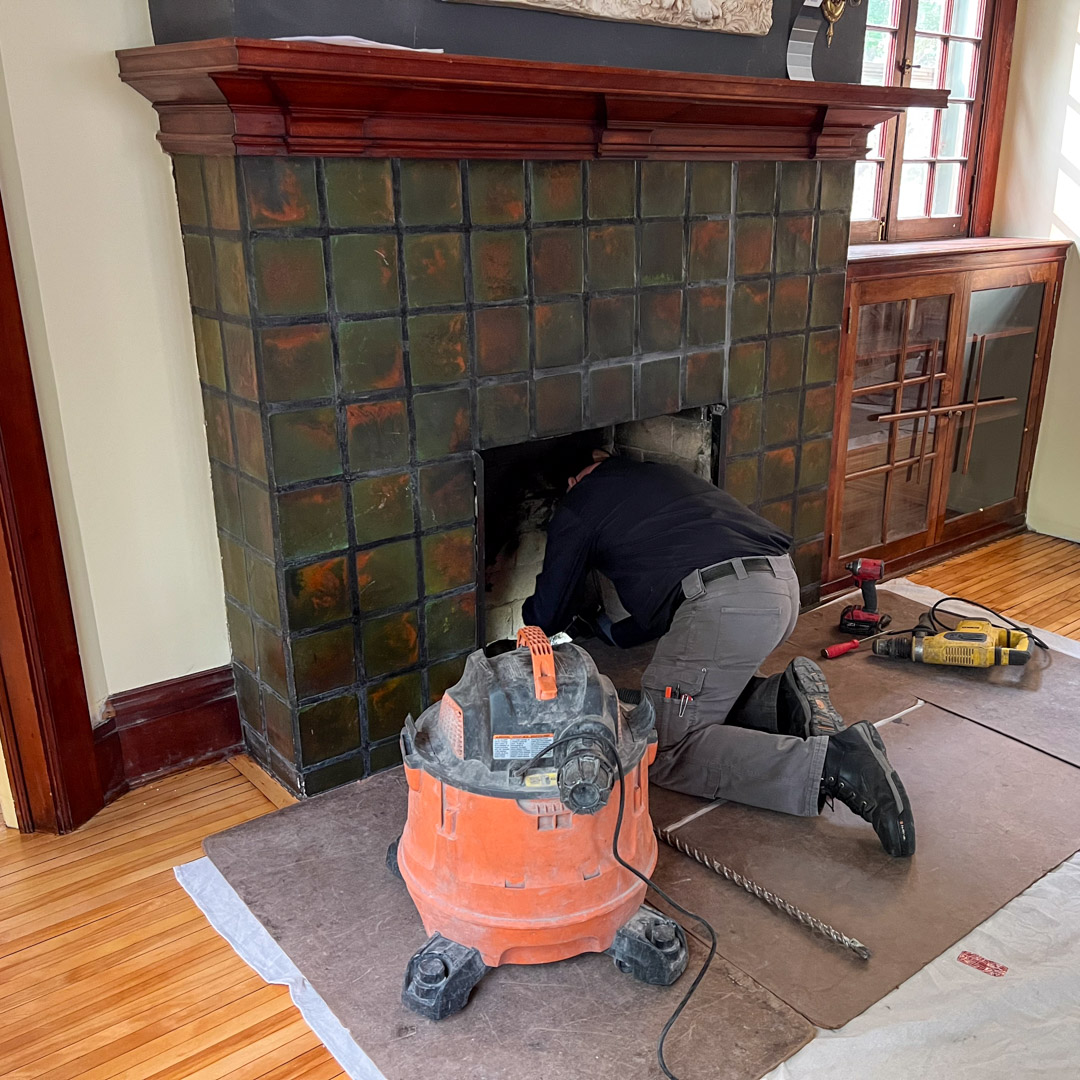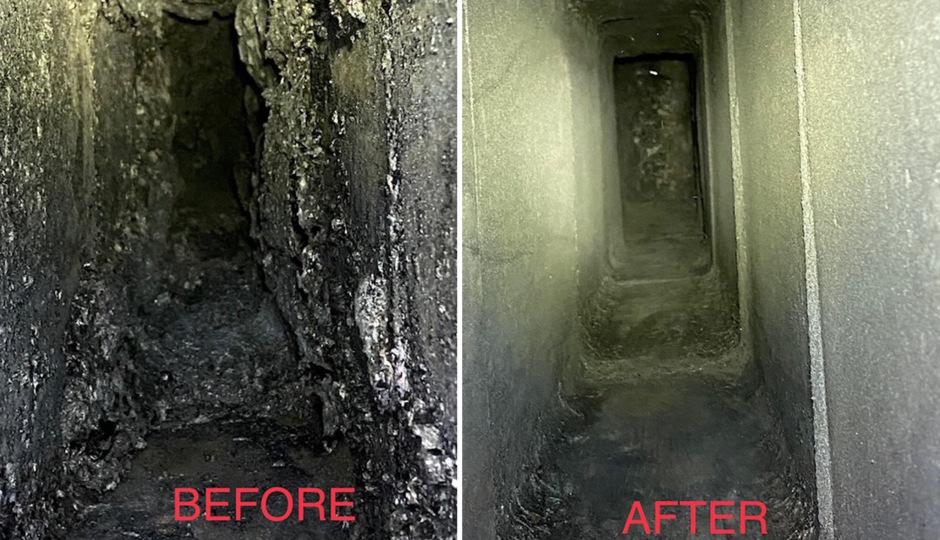Essential Chimney Sweep San Jose Tools Every House Owner Need To Have
Essential Chimney Sweep San Jose Tools Every House Owner Need To Have
Blog Article
The Ultimate Smokeshaft Cleansing List for Homeowners
Making certain the safety and security and effectiveness of your smokeshaft is a critical obligation for homeowners who depend on their fire place or wood oven for heat during the colder months. A well-kept chimney not just boosts the total performance of your heating unit but likewise reduces the threat of potential dangers such as fires and carbon monoxide gas leakages. With an extensive list in hand, house owners can methodically address vital maintenance jobs that are necessary for a tidy and secure smokeshaft. From checking the chimney framework to removing creosote buildup, each action plays a vital function in safeguarding your home and enjoyed ones.
Chimney Assessment and Assessment
The interior of the chimney ought to be inspected for any type of blockages, such as bird nests or excess residue, which can present a fire danger. Evaluating the flue for creosote build-up is crucial as this extremely combustible material can cause a chimney and stir up fire.

Outside Upkeep and Repair Works
Checking the exterior of the smokeshaft for any type of structural issues, such as splits, loose blocks, or indications of water damage, is vital in making sure the general security and long life of the chimney. On a regular basis inspecting for any kind of splits in the mortar or blocks can help protect against water from permeating in and triggering damage to the smokeshaft framework. Attending to these exterior upkeep concerns in a timely manner can lengthen the life of your smokeshaft and avoid costly fixings down the line.
Cleaning Up the Chimney Flue and Damper
To make certain correct functioning and security of your smokeshaft, normal cleaning of the chimney flue and damper is crucial. Guarantee that the damper opens up and closes efficiently, as an effectively working damper aids regulate air movement and stops drafts when the chimney is not in usage. Regular maintenance of the chimney flue and damper not only improves the performance of your chimney but likewise minimizes the danger of chimney fires and carbon monoxide buildup in your home.
Removing Creosote Buildup Securely
How can homeowners safely remove creosote accumulation from their chimney to keep its ideal functioning and safety and security? Creosote, a by-product of burning timber, can collect in chimneys over time, posturing a fire danger if not correctly taken care of.
There are various approaches to eliminate creosote, relying on the buildup's extent. For light creosote buildup, making use of a chimney brush or a homemade creosote cleaner constructed from equal components water and vinegar can be effective (Chimney Sweep San Jose). For thicker deposits, specialist smokeshaft cleansing solutions may be needed
It's essential to put on protective gear read here such as gloves, safety glasses, and a mask when handling creosote to avoid skin irritability or inhalation. Furthermore, correct ventilation while cleaning up the smokeshaft is vital to prevent breathing in dangerous fumes. Regular chimney examinations and cleanings can aid prevent creosote build-up, making sure the safety and effectiveness of your chimney.
Fire Safety Safety Measures for Smokeshaft Owners
Ensuring proper fire security preventative measures remain in place is critical for chimney proprietors to stop potential risks click resources and preserve a safe home setting. Regular chimney examinations by qualified specialists are essential to determine any type of clogs, creosote build-up, or structural issues that could present a fire threat. Installing a smokeshaft cap can protect against debris, pets, and rain from entering the chimney and triggering clogs or damages. It is vital to use skilled hardwoods for burning, as they generate less creosote contrasted to environment-friendly or softwoods. In addition, chimney proprietors ought to have a stimulate arrestor or chimney spark arrester mounted to avoid stimulates from getting away and potentially firing up neighboring combustibles. Effectively disposing of ashes in a metal container with a tight-fitting cover, located far from your house, is likewise vital to protect against unintended fires. Finally, having working smoke alarm and carbon monoxide alarm systems in your home can offer very early warnings in case of a smokeshaft fire or carbon monoxide gas leakage. By implementing these fire safety precautions, smokeshaft owners can delight in a cozy and cozy home atmosphere while minimizing the threat of fire dangers.

Conclusion
By adhering to the supreme chimney cleansing checklist laid out in this post, home owners can examine, clean, and repair their smokeshaft efficiently. Correct maintenance not just reduces the threat of smokeshaft fires yet additionally extends the lifespan of the smokeshaft system.
Inspecting the smokeshaft cap and crown for any damage is vital to avoid water from permeating into the chimney and creating more damage.
Regular maintenance of the chimney flue and damper not only enhances the performance of your smokeshaft but likewise decreases the risk of smokeshaft fires and carbon monoxide accumulation in your home.
Normal chimney assessments and cleansings can help stop creosote build-up, making certain the safety and effectiveness of your chimney. (Chimney Sweep San Jose)
Setting up a chimney cap can avoid particles, pets, and rainwater from going into the chimney and triggering clogs or damages. Appropriate upkeep not only minimizes read the risk of smokeshaft fires however additionally prolongs the lifespan of the smokeshaft system.
Report this page